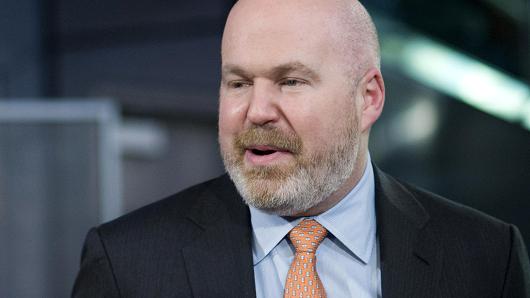Hedge Funds Search for Their Real Killers
by Clifford Asness, Ph. D. AQR Capital Management, Inc.
There has already been much ink, and maybe even some blood, spilled debating the merits of “Active Share” for judging an investment fund. There was the original paper, a critique of that paper written by some of my colleagues, a reasonable (which doesn’t mean I agree with it) response to AQR’s piece, and even a seriously deranged1 response to my colleagues’ work (thankfully I’m known for a certain aplomb and even sangfroid in such tense situations and have helped calm everyone down). I don’t seek to re-open this debate but, rather, to focus on one aspect of it. Admittedly it’s an aspect near and dear to my heart and wallet. I believe (hope) this aspect of the debate is so clear that all sides can agree. Active Share may or may not make sense for judging traditional active discretionary stock pickers (and when I say “make sense” I mean on its own and versus other measures such as tracking error). However, Active Share clearly makes no sense, and is, in spirit, explicitly backwards for judging direct factor investors (or quantitative investors, or smart beta investors, or style investors, or structured investors; all of which I consider near synonyms with different marketing labels — I haven’t even come very close to covering all the possible options so let the semantic wars rage on!).
Here’s a brief and probably insufficient review. Having a metric to judge how much long-only active portfolios differ from their benchmarks is clearly useful. While obviously useful to know how much relative risk one is taking, it’s also particularly useful for judging the value proposition of such an investment. That is, paying a lot in fees for small deviations (closet indexing) is probably a bad idea. The proponents of Active Share argue that besides detecting closet indexing it’s also a good metric for judging these managers’ average skill and a better metric than some other possible candidates. That is a bit different and goes further. They’re saying higher Active Share (bigger bets vs. the index on the Active Share scale) is, on average, also indicative of delivering more alpha (with all the difficulties judging “alpha” can present) and other major alternatives not as useful.
Explicitly or implicitly Active Share is, and must always be, judged against alternative methods of making similar judgments. The most prominent alternative is “tracking error.” Active Share essentially doesn’t use statistics. It simply adds up the size of the active managers’ deviations from the index without regard for whether they’re making an active bet in a volatile stock versus doing so in a calm stock, or whether many or few of their active bets are highly correlated with one another. For instance, if an active manager took ten separate stock bets all the same dollar size and each bet was overweighting stocks in the same industry, tracking error would invariably say this is riskier (a bigger active bet) than if the stocks were all in very different industries (a more diversified and thus lower tracking error bet). In contrast, Active Share is indifferent and would report the same result either way. You can make an argument for either tracking error or Active Share (and the linked papers above certainly do!). Active Share has the virtue, and perhaps handicap, of great simplicity where tracking error perhaps has the negative of being dependent on estimates of the volatilities and correlations among stocks (that is, two different analysts calculating Active Share will usually come up with the same number while this is not necessarily true for tracking error2). I think it’s pretty clear, at least in this and in similar examples, that tracking error is a better estimate of the risk taken versus the benchmark (ignoring the correlation and volatility of bets, even if measured imperfectly, seems pretty serious for estimating risk). That would, presumably, not surprise Active Share proponents as it’s not their main goal. Where it gets interesting is evaluating claims that one or the other measure also tells us where manager skill is likely to exist.
Now why would Active Share be better than tracking error as a proxy for manager conviction and therefore, perhaps, manager skill?3 For instance, it may be the case that managers are really good at one part of what they do (e.g., picking stocks within industries to continue with that example) but really bad at other things (e.g., picking industries4) so, in this hypothetical case, if higher tracking error comes from industry concentration it is actually not more value for the fee dollar but just risk without reward. In this case, tracking error may be the better estimate of the actual risk taken (again you’d certainly hope so) but not a better measure of where skill or value-added comes from. Shocking to no one, I tend to side with AQR’s arguments that cast doubt on Active Share’s ability to forecast where skills lies (in the absolute and relative to tracking error). But, I do think there are reasonable points and arguments on both sides and the debate should continue (sans the most seriously deranged contributions).
All that brings us to my real point (I had you worried I wouldn’t get there, right?). Direct factor investing (or any of its near synonyms) is a different ball game from traditional active stock picking. Specifically, Active Share, in particular when compared with tracking error, makes little to no sense for direct intentional factor tilted long only portfolios. These portfolios aren’t just different on the surface from traditional active stock picking. They are different in a far deeper way. They are only about getting exposure to the desired factor or factors while taking as little other exposures as possible (in this essay I always mean exposure as versus the index — the same exposure/risk that Active Share and tracking error deal with). That entails minimizing exposure to unwanted factors (everything but the desired factor or factors) and maximizing exposure to desired ones (the desired factor or factors). Perhaps most importantly, it implicitly entails taking as little specific stock risk as possible while pursuing the earlier goals (the “right” factor exposure). For instance, a running issue in my life is, when questioned by the media, sometimes, even after we explicitly ask them not to, I still get asked “what’s your favorite stock?” I usually respond, often to an incredulous questioner who looks at me like I’m just a little slow or addled, “I don’t know” (truth be told I say that even if I do know as it’s kind of fun and lets me go on to make the bigger point).
Put another way, an imperfect yet useful way to think of factor or smart beta investing is an attempt, relative to the index, to bet on the factor or factors you believe in, not bet on those you don’t, while otherwise implicitly minimizing Active Share.5 One can like or dislike these products (shockingly, please put me mostly in the “pro” camp) but it seems really odd to judge them on whether they have enough Active Share when minimizing Active Share is a lot of the point!.
Factor or smart beta products simply drive the biggest wedge between the simple ways like Active Share and the more complex (though not really that hard) methods like tracking error. You can get a lot of tracking error with factor bets6 — but, if done competently, it’s all about the factor bets not about stock specific risk which, again, factor investing explicitly tries to minimize. This is a case, judging the active risk of factor or smart beta portfolios, where tracking error is tailor made to pick up this kind of deviation from the index (factor bets) while Active Share is tailor-made to ignore most of it. I venture if we look for portfolios where tracking error and Active Share give the most different answers, we’d find direct factor investing yields some of today’s extremes, and are much more prevalent today than in 2009 (the publication date of the first Active Share paper).
Others have, while not generalizing it as I do here, done a good job of recognizing this too. For instance, Research Affiliates has a piece where they say:
Because RAFI portfolios are broadly diversified, they tend to have a relatively low Active Share of 30%. RAFI portfolio excess returns are made more attractive because they are achieved in a smooth fashion, with a low tracking error of 4% (relative to 8% for active managers). Accordingly, the RAFI approach provides the best of both worlds—strong excess returns without the big out-of-index risks active managers take—as Table 1 shows.
Note, they are explicitly and correctly bragging about having a low Active Share (remember, the proponents of Active Share believe that tends to indicate a bad economic deal and, even more controversially, a lack of conviction that they claim leads to poorer relative returns). Research Affiliates gets it right here. As a provider of factor or smart beta products they are, and should be, proud of a low Active Share. It’s really quite obvious – again, for the same factor bet you’re doing it better if you can deliver it with a lower Active Share. And the argument that low Active Share means low conviction, and perhaps poorer results, is obviously inapplicable when stock-by-stock selection is explicitly eschewed and minimized and the conviction you have is all about the factor bets!
So, by all means, let’s all continue to explore and debate the relative merits of Active Share, tracking error, and perhaps other methodologies. Let’s continue to debate these, both for the notion of “what am I getting for the fee paid?” and for the related, but separate, point of “can any of these measures indicate more or less skillful managers?”
But, I hope we can all agree that factor or smart beta portfolios represent an important special case where Active Share is not a particularly applicable measure and may even be backwards.7 In fact, if future research can ex ante distinguish funds by whether they are systematic factor or smart beta portfolios by design, perhaps we’ll even get better empirical evidence on the very questions about Active Share vs. tracking error we’re debating, as we’ll exclude the places where we know Active Share makes little sense.
But, for now, factor investors shouldn’t be ashamed of, but rather should wear their low Active Share measures proudly, as it’s kind of the point.
1Ironically, while deranged in tone it also makes the mistake highlighted in this essay – applying Active Share to dedicated factor portfolios that implicitly try to minimize Active Share and then chastising them for their low Active Share. Deranged and wrong is a poor combination.
2I say “usually” as Active Share is not immune from this issue either as it’s not always clear what the right benchmark is and thus you can still have competing different Active Share measures if you have competing possible benchmarks.
3Advocates of tracking error generally don’t even advocate the measure as correlated with skill – just as an estimate of risk. The real disputed questions are whether high Active Share is indicative of skill, and vice versa, and whether high tracking error relative to Active Share is a recipe for, on average, disappointment.
4While I’m using industries as the example here this generalizes to the more common academic factors like value, momentum, profitability, low beta, size, etc. Though, to continue with industries, one interesting twist is that the academic factors (see Asness, Porter, Stevens (2000)) generally work better within industries than across them. Seeing as across industry bets will generate more “tracking error per Active Share” than within industry bets there is perhaps something to explore here linking these two lines of inquiry.
5That’s not the explicit goal optimized for but it’s, in spirit, close to what’s going on.
6“A lot” is in terms of the tracking error relative to the Active Share of these portfolios – factor portfolios can still be run at low levels of tracking error if desired.
7I’m going out of my way to stress what I hope is simple, obvious agreement here but, once again, Cremers and Petajisto don’t make it so easy for me! They explicitly say “In contrast, funds focusing on factor bets seem to have zero-to-negative skill, which leads to particularly bad performance after fees. Hence, it appears that there are some mispricings in individual stocks that active managers can exploit, but broader factor portfolios may either be too efficiently priced or too difficult for the managers to predict” (p. 3332). They also say, regarding an exhibit in their paper, “The evidence in these two panels suggests that the funds with low Active Share and high tracking error tend to do worst, both in terms of net and gross returns, which implies that factor bets tend to destroy value for fund investors” (p. 3351).
Importantly, they are not ex ante distinguishing funds that claim to focus on factors from other funds, rather it’s all based on an empirical mixing of presumably more expensive active stock pickers of course doing some amount of factor tilting with explicit presumably lower fee factor portfolios (and, importantly, fewer of those existed at the time of their original paper than now). They are indeed clearly saying that they find funds that have bigger factor bets do worse. But, this is almost a tautology with their main point as it’s very close to their claim that high Active Share funds vis a vis high tracking error outperform (as factor bets will be one of the main differences, if not the main difference, here). It’s just said differently.
Furthermore, their measure of skill is generally skill after removing the Fama French Carhart 4-factor model (the Fama-French 3-factor model plus the measure of momentum first used in Asness (1995) and first used as a 4-factor model by Carhart (1997)). This is kind of like saying “factor investing doesn’t add value beyond factor investing.” I.e., a near information-less tautology. It might even (wrongly) show that factor portfolios destroy value if you pit real life long-only factor portfolios against factors that are long-short (generally a slightly superior implementation) and gross of any transaction costs.
So, while it looks like they explicitly disagree with my point here believing a low Active Share is damning even for direct factor portfolios, I still think there’s hope! I’m going to assume, for the sake of comity and sanity, that when they say factor investing doesn’t do well they really mean “active stock pickers who focus on factors not individual stocks don’t do well.” Certainly an arguable point, but one that doesn’t dismiss all low-cost, systematic factor investing — just factor investing done by those you expect to be choosing individual stocks. That the original Active Share paper came before much of the current focus on direct factor and smart beta portfolios gives me some hope there is less disagreement here than the above quotes from 2009 would suggest and my interpretation may be correct. But if the Active Share proponents think their results show that low cost factor / smart beta portfolios are just broadly a bad idea, because after removing factor bets their mixed data set of all types of investment processes doesn’t like them (as a subset of their sample of low Active Share vs. higher tracking error portfolios), then it is back on like Donkey Kong…
This post was originally published at AQR Capital
Copyright © AQR Capital












